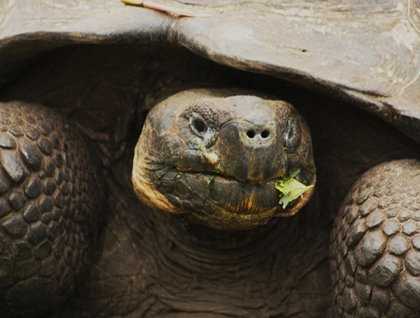We arrived at Santa Cruz Island, where the largest town in the Galápagos is situated. We disembarked at the National Park pier and soon headed off to visit the giant tortoise breeding center and the Charles Darwin Research Station.
At the breeding center, we learned about many of the projects happening in the Galápagos to restore the giant tortoise population in the archipelago. Certainly one of the main characters of the visitor’s site is Super Diego, the tortoise who came back from the San Diego Zoo to help save from extinction the Espanola Island species. So far this has been one of the breeding center’s most successful projects and many of Super Diego’s offspring are already reproducing naturally in the wild.
After learning about giant tortoises in captivity and the evolutionary history of these reptiles, in addition to the many successful conservation projects in Galápagos, we headed for the highlands of Santa Cruz. At a small hacienda with a sugarcane press, we learned about the process of sugar production and alcohol production from sugarcane. After lunch, we visited the area where giant tortoises are found in the wild. We saw several of them just grazing on grass and cooling off in the rainwater ponds, letting the mud take care of their parasites.
An interesting visit to a double-decker lava tube was also offered. We walked into the lava tube and got to learn about how it is formed and the different processes that it takes to have such an incredible smooth shape. Many geological features are found on this island, but none of them are as incredible as this double-decker tube. After coming back to the National Geographic Islander for our daily briefing and recap, we had a visit from the director of the Charles Darwin Foundation, who gave a speech about conservation projects going on in the Galápagos. We closed our day with local musicians and dancers who performed onboard, delighting us with a taste of the enchanted archipelago.







